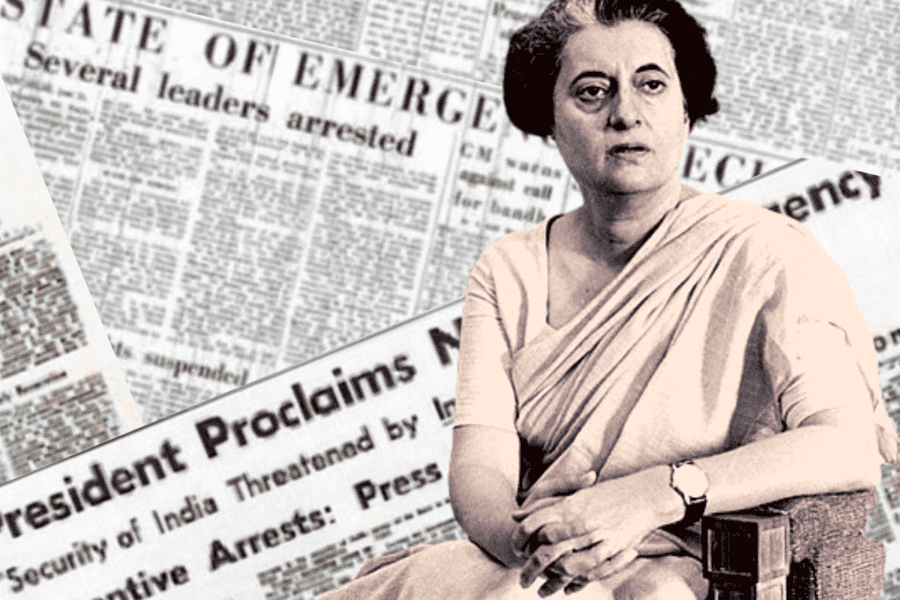Article 352 of the Indian Constitution empowers the President to proclaim a National Emergency if he is satisfied that the security of India or any part of its territory is threatened by war, external aggression, or armed rebellion. This provision confers extensive powers upon the Executive, enabling it to suspend certain fundamental rights and take necessary actions to safeguard the nation during such grave situations.
Any proclamation of National Emergency must be presented before both Houses of Parliament and is subject to their approval for continuation or revocation. While Article 352 serves as a crucial tool for protecting the country’s sovereignty and integrity in times of crisis, its invocation represents an exceptional measure. Consequently, its use has often raised concerns regarding potential misuse, concentration of power, and the consequent weakening of democratic values.
Grounds for Proclamation of a National Emergency
War: This refers to a situation where India is officially at war with another country. It involves armed conflict and hostilities between nations.
External Aggression: External aggression refers to an attack or invasion of India by a foreign power. It could involve military aggression or any other external threat that endangers the country’s sovereignty and integrity.
Armed Rebellion: Armed rebellion involves an uprising or resistance against the established government within the country
Duration and approval of the National Emergency
- Only the president can declare a national emergency when the cabinet gives a written recommendation
- If the president agrees, they can announce a national emergency; however, the announcement has to be endorsed by both houses of parliament within a month
- If the emergency is declared when the lower house (Lok Sabha) is not in session or gets dissolved within that month without approving the emergency, it stands until 30 days after reassembly of Lok Sabha, as long as Rajya Sabha has given the approval
- If both houses approve for emergency, it lasts for 6 months and can be extended; however, after 6 months, parliament needs to grant permission for it to continue.
In 1978, Art. 352 was amended by the 44th Constitution Amendment to minimize the chances of abuse of power to declare an emergency:
- The “internal disturbance” was replaced by “armed rebellion”.
- A proclamation of emergency will not be issued by the President unless a recommendation of the Council of Ministers has been communicated in writing.
- The proclamation of emergency must be approved within one month instead of two months.
- A proclamation of emergency ceases to operate automatically at the expiry of 6 months and can be continued beyond that period after approval by a resolution passed by both houses every 6 months.
- The President shall revoke a proclamation of emergency on a resolution passed by the Lok Sabha to that effect. A special sitting of the House can be called at 14 days’ notice by 1/10th of the total members of that House.
- The unenforceability of FRs in Art. 20, 21 cannot be suspended at all.
- Art. 19 remains unaffected if the ground of proclamation is only armed rebellion and not war or external aggression.
Minerva Mills Ltd. v. UOI (1980): The SC in this case held that there is no bar on judicial review of the validity of the proclamation of emergency issued by the President under Art. 352(1). The judiciary can examine whether the President’s satisfaction is based on valid grounds or not.
India has proclaimed a national emergency during the following times:
- Indo-China war (1962)
- Indo-Pakistan (1971)
- Internal disturbance (1975-77)
Consequences of the Proclamation of National Emergency
Extension of Centre’s Executive Power (Art. 353)
- The executive power of the Union extends to giving directions to any State regarding how its executive power should be exercised.
- This power can even be exercised in states where an emergency is not in force if the security of India is threatened due to activities in the emergency-affected region.
Parliament empowered to legislate on State subjects (Art. 353(b))
- During the proclamation of emergency, the Union Parliament is empowered to make laws in any matter of the State List.
- The distribution of legislative powers is fundamentally changed during emergency.
Centre empowered to alter distribution of revenue between the Union & the State (Art. 354)
- The President can modify the distribution of financial resources between the Centre and States (Art. 268-279).
- Such an order must be laid before Parliament and ceases to operate at the end of the financial year in which the emergency ends.
Extension of Lok Sabha’s Term (Art. 83(2))
- The term of the Lok Sabha can be extended one year at a time during the emergency.
- This extension can only continue up to six months after the emergency ends.
Union’s constitutional duty to protect the State (Art. 355)
- The duty to protect states from armed rebellion/external aggression.
- The duty to see that the government of every state is carried on by the provisions of the Constitution.
Suspension of Fundamental Rights guaranteed by Art. 19
- When a national emergency is proclaimed, the rights under Art. 19 automatically stand suspended.
- The government can make laws or take actions without being restricted by Art. 19.
- This suspension is only applicable if an emergency is declared due to war or external aggression (not for armed rebellion).
Suspension of enforcement of Fundamental Rights (Art. 359)
- The President may suspend the right to enforce certain FRs (except Arts. 20 & 21).
- Citizens cannot move to any court for the enforcement of such rights.
- Suspension of ongoing legal proceedings.
Contributed by: Vanshika Dhiman (Intern)

